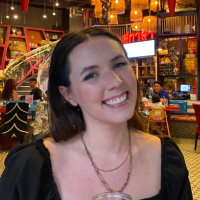A Call from the Past: Embracing the History and Future of Aperture Card Scanners
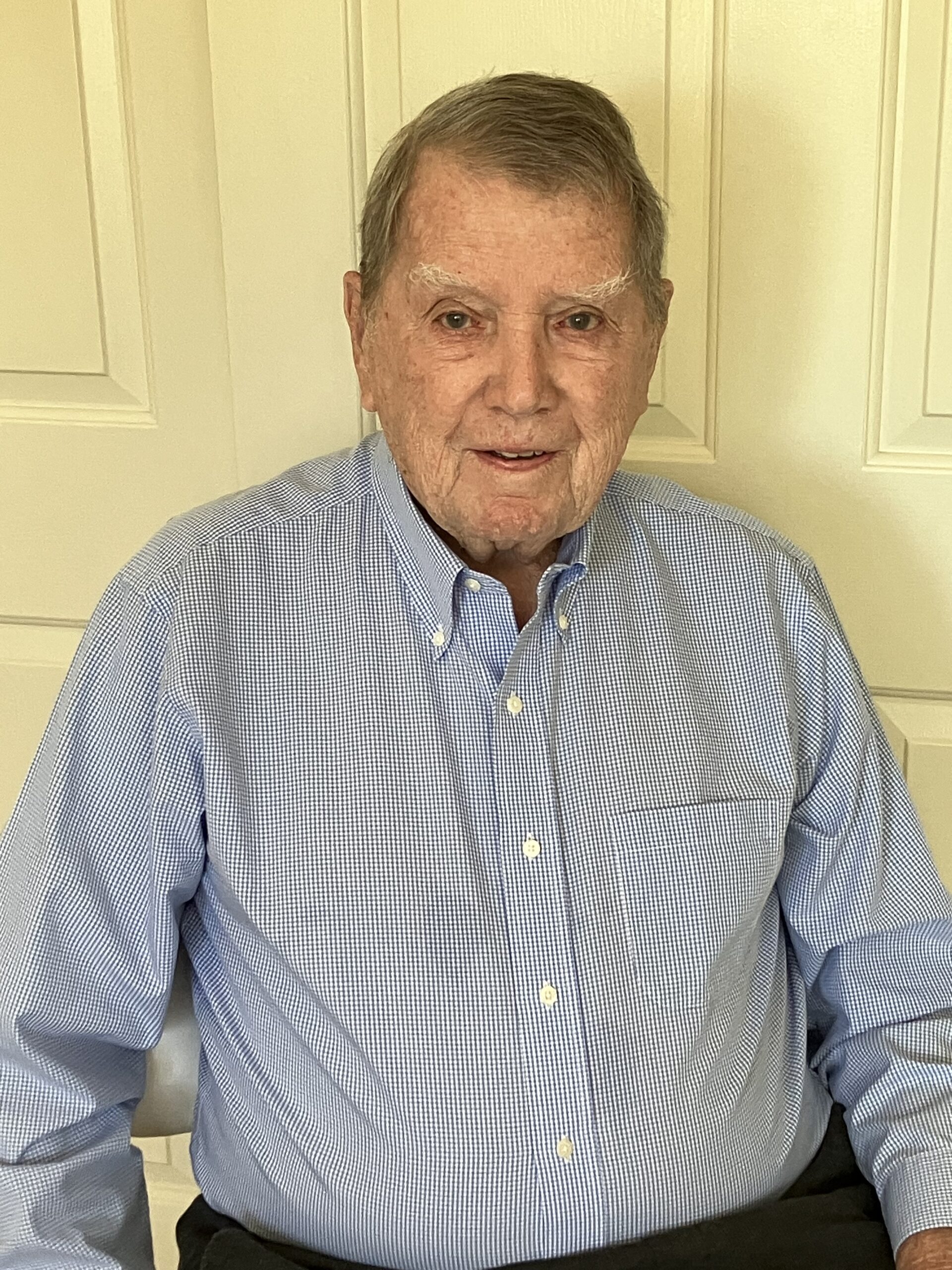
It all started when I received a voice message from Walter (Walt) Spicer, a former records management professional from Napa, California. In his short (but informative) message, he told me the story of his patent for a machine which created aperture cards and asked if The Crowley Company (Crowley) could send an aperture card as a memento of his life’s work to pass along to future generations.
This interaction sparked the realization that the motivation of Walt’s request paralleled the purpose of aperture cards themselves: to preserve information beyond one human life. In this blog, we’re sharing a little of Walt’s story and how he and Crowley have independently been working to progress records access.
Total ReCALL
This wasn’t Walt’s first time connecting with Crowley. He had commented on a 2017 blog which discussed how aperture cards originated and became a favorite media for nuclear, engineering, aeronautics, naval, aerospace and other technical industries. If you’d like more background on the media, we recommend reading that blog first. The following information is based on what Walt shared with us in recent months.
The Voicemail
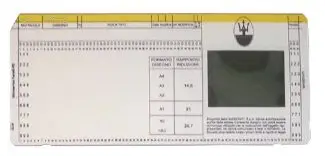
“In 1960, I was employed by First American Title Insurance Company (First American) [in] Santa Ana, CA as assistant vice president of administration. We were working to build new title plants in California, Arizona and Utah,” explained Walt. “Title plants are databases of property records and contain a running history of real estate parcels in a specific county and vital transactions that are recorded daily for each parcel.” The plants include deeds, mortgage documents, liens and other information that title companies would need to ensure property ownership and provide adequate insurance.
“For many years copying information into the plants was done by hand. In the 1940s, microfilming the courthouse records became the norm and 35 mm film readers were used to search the microfilmed county records and duplicate records were added to the plants.” Walt continues, “Much later, IBM data cards [cards with punch data and no microfilm] were used to catalog the documents within each plant. The microfilm rolls containing the actual document images that would then need to be pulled from storage and the researchers would use viewers to search the records. The entire records pulling process was manual.”
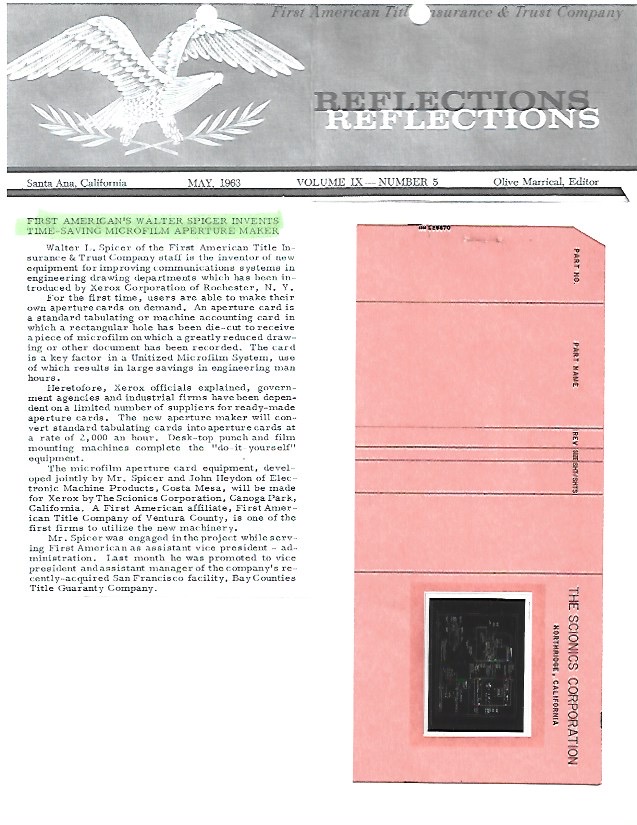
Walt helped to develop a mounting device which would a) increase the ability for those within the title plants to make their own aperture cards and b) facilitate faster records research by condensing all information onto one media, requiring fewer steps to access critical information. The machine was created in a shop in Costa Mesa, CA and punched a rectangular hole in the data card the size of a 35 mm film exposure. The microfilm was then viewed and cut to be attached within the hole or aperture of the card. The film was then secured it into the card with transparent Mylar adhesive tape.”
Despite some testing and alterations to the mylar taping process, Walt’s concept stayed relatively the same throughout its use. The card design was patented and used by First American for many years. A First American newsletter published in May 1963 notes, “For the first time, users are able to make their own aperture cards on demand…The use of which results in large savings in engineering man hours.”
Many such mounting devices were made available in the years following, but to our knowledge Walt’s design was the first.
From 1960 to 2023
Crowley discontinued our aperture card creation services (formerly produced by our UK facility, previously known as Wicks and Wilson, Ltd.*) a few years back. Our aperture card creation services likely did not use Walt’s design, nevertheless, we appreciate that someone with such a rich contribution to the media’s history contacted the Crowley team for help and we happily sent him a sample aperture card.
While we no longer create aperture cards, Crowley still work intimately with the media both in manufacturing aperture card scanners and capturing them in our Digitization Services bureau. Crowley’s latest aperture card scanner, the C400 Advanced, has made scanning this media an easier process while creating even higher image quality than ever before.
Something to Call Home About: The New C400 Advanced
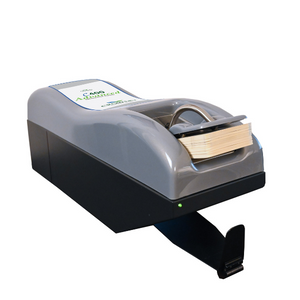
Just as iPhones graduate to the next generation of technology, so do Crowley’s aperture card scanners. Released in late 2022, the C400 Advanced is the latest generation of aperture card scanner and utilizes what users love about the C400 and evolves it to the next level of efficiency, quality and ease.
Efficient: In addition to capturing both film and punch data simultaneously at high speeds (a key feature on the C400 as well), the C400 Advanced holds even larger batches of aperture cards (up to 300 cards) for automatic loading, scanning and unloading. These production features, paired with the scanner’s ability to output multiple end-use files from a single scan, contribute to the C400 Advanced impressive efficiency for records managers. The scanner’s batch scanning mode allows operators to use multiple scanners at once for even more performance.
Image Quality: The clear difference between the two generations of C400 scanners is the enhanced image resolution. The C400 Advanced features a new high-resolution camera and uniform light source. We’ll just let the below images speak for itself on image quality.
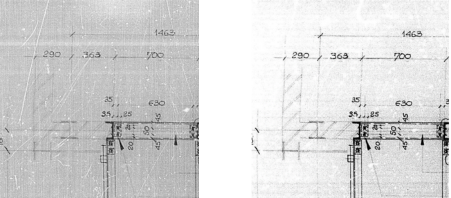
Ease of Use: The C400 Advanced software makes it easy for users of all familiarity levels to run production scan jobs with ease. Using templates allows the specifications of scan projects to be pulled up automatically and users can facilitate fast and consistent capture between different operators or over multiple workstations.
Stop “Phoning In” Aperture Card Capture and Preservation
Crowley’s sales teams have seen that many with aperture card collections just aren’t sure what to do with them, so their critical information goes untouched. Through digitization, vital records are preserved, accessible through easy-to-use digital files and physical copies are saved from degradation.
In addition to manufacturing the new C400 Advanced, Crowley Digitization Services – our award-winning service bureau – has also employed the scanners in their aperture card scanning department.
“The image quality is really what blew me away,” notes Crowley microform scanning project manager, Kristina Bane. “It’s magnificent. The speed enhancements and new design make a difference in our timelines too since scanners are easier to maintain, scan faster and need little-to-no downtime. Overall projects are taking less time to complete and are in better quality.” Using this new speed and efficiency, Crowley’s Digitization Services captures large aperture card collections faster than ever.
“We’ve seen a remarkable difference in project speed and image quality,” bureau director Patrick Hill states. “Production speed has increased significantly, making it simple for us to digitize any size collection with a better-than-expected turn-around time.”
Preserving Aperture Card’s Long Legacy…With More to Come
Crowley is honored to share Walt’s story and commend him for his contributions to innovating the media. We applaud his work in making this media what it is today and hope you enjoyed reading the retelling as much as we enjoyed writing about it.
Interested in Preserving Your Information?
If you have aperture card collections and are looking to convert records to digital copies, Crowley can help! Click to request a demo of the new C400 Advanced aperture card scanner or get a consultation of aperture card scanning services! In the meantime, watch the scanner in action in Crowley’s new video!
* Since acquiring Wicks and Wilson, Ltd. in 2011, Crowley has also been manufacturing aperture card scanners such as the C-Drive X and C400.
